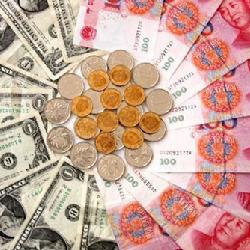
On the 17th, Mr. Zhang, who had fought for more than a dozen years in the import and export industry in Chongqing, said that he received a phone call from a friend a few days ago. This was the first time in recent years that someone called to inquire about foreign trade. “A friend asked me two days ago how the foreign trade business should be done. It surprised me a lot.â€
What makes Mr. Zhang puzzled is that the export business has become more and more difficult to do in the past two years. Many small and medium-sized enterprises are on the verge of losing money. I did not expect that someone would like to break into this industry at this time. However, when I think about it, it's no surprise that a friend calls me. Since mid-February, when the *** changed its rhythm, it began to depreciate. Changes in the exchange rate market have allowed export companies to recover profits, which is naturally a temptation for businessmen.
Foreign trade companies make 20,000 more in January
Since February 18, *** has continued to go out of a devaluation market. In the last week of February, the cumulative depreciation of the exchange rate of the *** exchange rate reached 0.89%, which was the largest one-week depreciation since the exchange rate reform.
Every day, Mr. Zhang, who has to go online to check the exchange rate changes, said that for small and medium-sized foreign trade companies, this is really a breathing space. “In the short term, at least the exchange rate has dropped, and what we export is worth it.â€
He calculated a bill: For a period of time in early 2012, US$1 was roughly convertible to 6.3 yuan. By last year, US$1 could only be exchanged for 6.04 yuan. That is equivalent to 1 US dollar per export. Earned 0.26 yuan***. Mr. Zhang’s foreign trade company has an export order of about 400,000 U.S. dollars per month, and the monthly profit is less than 100,000 yuan.
But in the past month, the devaluation of Mr. Zhang has made Mr. Zhang taste the sweetness, because one dollar can exchange *** yuan or so, so that the rate of return slightly rebounded compared with the same period last year. "In other words, the removal of raw materials, suppliers, price adjustments and other factors, can make more than 20,000 yuan per month more than last year." Mr. Zhang said that for small and medium-sized foreign trade enterprises like him, it is already a good news.
The biggest impact on the garment leather industry
According to sources in the industry, unlike the period of appreciation of *** at the end of last year, changes in the value of the currency can directly bring 1% to 2% of profit growth to exporting companies when they accept orders from Europe and the United States at the current exchange rate.
“Don't underestimate the 1%-2% increase in profits. For labor-intensive export enterprises such as textile and clothing, leather shoes, etc., they are most affected by changes in exchange rate fluctuations. Previous profits were thin and some corporate profits were already low. At the critical point, if *** continues to appreciate, many small businesses will have to fall.†Yesterday, the relevant person in charge of the foreign trade department of the Foreign Trade and Economic Cooperation Bureau said.
Some companies in the textile and clothing industry in Chongqing stated that the depreciation of *** is good, but the impact has not yet been measured. “Actually, the impact is still very large. The profit rate of China’s textile trade is very low, at around 5%. Since February, devaluation of nearly 1% has been positive. This is good for the future.†Executive Vice-Chairman, Municipal Garment Industry Association Chen Shangfu said.
"As long as the depreciation of ***, it is equal to making money." He said that because the general textile and apparel companies will reserve several months of raw materials in advance, so the price increase may occur a month or two after the exchange rate fluctuations.
Analysts pointed out that the continuous depreciation of the exchange rate against the U.S. dollar was mainly affected by the withdrawal of U.S. QE, the return of funds, and the recent decline in the volume of China's export trade and the trend of the exchange rate. However, when *** ceases to depreciate, it is still unknown.
Casual Tee Shirts,Women Tee Shirt,Custom Logo Tee Shirt,Short Sleeve Plain Tee Shirt
Zhejiang Shaoxing Yongda Knitting & Art of Work Co., Ltd , https://www.ssfwfabrics.com